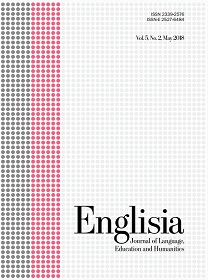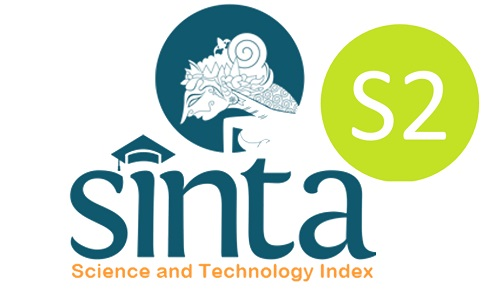IMPROVING ARCHITECTURE STUDENTS’ ENGLISH VOCABULARY THROUGH THE USE OF ARCHITECTURAL DRAWINGS
DOI:
https://doi.org/10.22373/ej.v5i2.3073Keywords:
ESP, architectural drawings, vocabularyAbstract
This study aims to find out the effectiveness of architectural drawings in teaching English vocabulary at first-semester college students of Architecture, Malikussaleh University, Lhokseumawe, Aceh, Indonesia. The media applied in the research worked in both improving Architecture-major students’ ability to learn the target language and motivating them in the teaching-learning process. A likert questionnaires analysis was used to determine factors affecting students’ lack of English vocabulary. The quasi-experimental method was applied to acquire the test data needed. The t-test formula was then used to find out the differences between conventional teaching technique and using-architectural-drawings technique through the pre-test and post-test scores. Based on the analysis, the findings showed that there was a significant success on improving the students’ vocabulary mastery. However, as the architectural drawings used in the research were limited on the presentation type of drawing, other kinds of architectural drawings may not result in the similar way.Downloads
References
Albano, L. (2013). How English Language Teachers Can Use Pictures in Class. Retrieved from https://www.britishcouncil.org/voices-magazine/how-english-language-teachers-use-pictures-class.
Case, A. (2002). How to teach English for Architects. Retrieved from http://edition.tefl.net/articles/teacher/how-to-teach-english-for-architects/.
Case, A (2013). Teaching Technical English. Retrieved from https://tefltastic.wordpress.com/worksheets/technical-english/.
Council of Europe and European Commission (2000). Methodology in Language Teaching T-Kit. Strasbourg Codex: Council of Europe Publishing.
Elly, B. & Gerlach. (2007). Media in Language Learning. The internet TESL Journal, VII (18). http:/itesli.org/Cambridge University Press
Ernestova, M. (1981). How to use ready-made pictures. English Teaching Forum. XIX (4). Washington DC.
Fauzi, R. (2014). Pengetahuan Gambar dalam Arsitektur. Retrieved from http://arsitektung.blogspot.co.id/2013/07/pengetahuan-gambar-dalamarsitektur.html.
Fiorito, L. (2005). Teaching English for Spesific Purposes. Retrieved from http://www.usingenglish.com/articles/teaching-esp/.
Freeman, D. (2000). Sampling. Berkeley: University of California.
Hayati, A. (2016). The Correlation Between Indonesian Students’ Vocabulary Mastery and Their Reading Comprehension. Al-Ta’lim Journal, 23 (2). DOI: http://dx.doi,org/10.15548/jt.v23i2.217.
James (2010). Types of Media Used in Teaching and Learning for its Conducive Environment. Retrieved from http://zuavanhu.mywapblog.com/types-of-media-used-in-teachingand-lear.xhtml.
Karso, M. (2013). 5 Penyebab mengalami Kesulitan belajar Bahasa Asing. Retrieved from https://belajarmenjadilebih.wordpress.com/2013/02/16/5-penyebab-mengalami-kesulitan-belajar-bahasa-asing/.
Kemp, J. E. (1994). Planning for Efective Technical Training: A guide for Instructors and trainers. Educational Technology Publications, inc. Englewood Cliffs, New Jersey.
Larsen, D. (2000). Techniques and Principles in Language Teaching. Washington, D.C: Oxford University Press.
Nation, P (1994). New Ways in Teaching Vocabulary (TESOL), Alexandria: TESOL.
Nurlaeli, E. et.al (2012). Improving Students Vocabulary Enrichment through Picture and Picture. English Education Study Program. Faculty of Teacher Training and Educational Sciences. Pakuan University.
Pengayaan.com. (2015). Fungsi Standar Deviasi dan Perhitungannya. Retrieved from: http://pengayaan.com/fungsi-standar-deviasi-dan-perhitungannya/
Richards, J.C. & Renandya, W.A. (2002). Methodology in Language Teaching. New York: Cambridge University Press.
Sari, Ni putu. I.K.S (2013). Improving vocabulary Mastery through Pictures based memory words game of the Fourth grade students of SDN 17 Dauh Puri Denpasar in academic year 2012/2013. Retrieved from http://unmas-library.ac.id/wpcontent/uploads/2014/04/PDF-SKRIPSI1.pdf.
Schmitt, N (1997). Teaching English to Children. New York Cambridge University Press (CUP).
Taslim, F (2014). An Experiental Study of Teaching Vocabulary by Using Hyponymy Games on the Seventh Grader of MTs Syech Ibrahim Payakumbuh. Al-Ta’lim Journal, 21(3). DOI: http://dx.doi,org/10.15548/jt.v2li3.103.
Downloads
Published
Issue
Section
License
Proposed Policy for Journals That Offer Open Access
Authors who publish with Englisia journal agree to the following terms:
- Authors retain copyright and grant the journal right of first publication with the work simultaneously licensed under a Creative Commons Attribution License that allows others to share the work with an acknowledgement of the work's authorship and initial publication in this journal.
- Authors are able to enter into separate, additional contractual arrangements for the non-exclusive distribution of the journal's published version of the work (e.g., post it to an institutional repository or publish it in a book), with an acknowledgement of its initial publication in this journal.
- Authors are permitted and encouraged to post their work online (e.g., in institutional repositories or on their website) prior to and during the submission process, as it can lead to productive exchanges, as well as earlier and greater citation of published work (See The Effect of Open Access).









